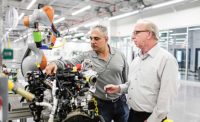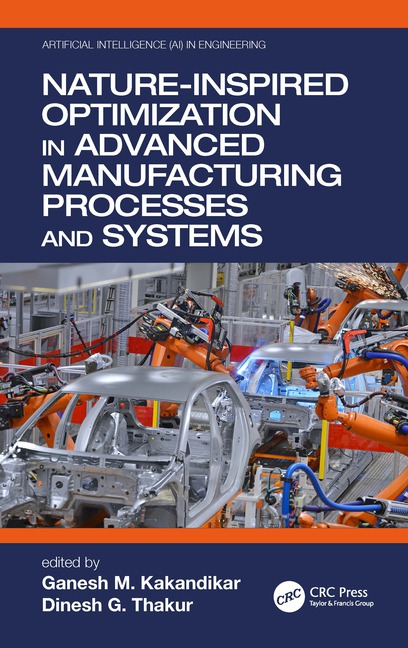PITTSBURGH—Advanced Robotics for Manufacturing (ARM), a research consortium, has selected four projects to develop next-generation automation. The four R&D projects will focus on robotic composites manufacturing, automotive assembly line robots, robotic sanding and finishing, and robotic wire harness assembly.
“This set of projects will be the first outcomes of ARM,” says Howie Choset, chief technology officer at the one-year-old organization. “We couldn’t be more thrilled with the mix of industry, academic, robotic and nonprofit organizations on each team, and look forward to working closely with them to develop these technologies.
“We believe that the advancements produced through these projects will strengthen the national manufacturing ecosystem and generate high-value career opportunities,” adds Choset.
According to Choset, each project will impact the future of manufacturing by aligning with one or more of ARM’s four strategic goals: asserting U.S. leadership in advanced robotics manufacturing; empowering American workers to compete with low-wage workers abroad; lowering the technical, operational and economic barriers for companies to adopt robotic technologies; and aiding in the creation and sustenance of valuable manufacturing jobs.
Project specifics are as follows:
Robot Assistant for Composites Manufacturing. The principal investigator is Rensselaer Polytechnic Institute, with assistance from organizations such as GE Global Research, the Institute of Electrical and Electronics Engineers, the Society of Manufacturing Engineers and the Southwest Research Institute.
“This project will develop an operator-guided, semiautomatic assembly process using industrial robots integrated with multiple sensors,” says Choset. “The goal of the project is to improve manufacturing productivity by enhancing the operator’s capabilities through advanced robotics, and appropriately applying the technologies that capitalize on the strengths of the robotics (precise manipulation) and the operator (decision-making).
Smart Companion Robot for Automotive Assembly. The principal investigator is Clemson University, with assistance from BMW, Siemens and Yaskawa.
“Few industrial robot deployments have made it into automotive final assembly because they tend to be expensive, inflexible and cumbersome,” says Choset. “The goal of this project is to demonstrate the viability of an intelligent mobile manipulator robotic system, the smart companion robot (SCR), to assist and augment human associates in automotive final assembly, where intensive manual manipulation remains the mainstay.
“The SCR is intended to provide cognitive assist by delivering the right part and tool at the right place at the right time, eliminating the risk of incorrect parts being assembled, and enhancing quality in high-mix assembly environments,” explains Choset.
“[It also will] provide physical assist, by helping the transport of medium-to-heavy parts from subassembly areas to reduce worker fatigue and repetitive injuries,” adds Choset. “Such capability addresses two variations of mass customization: high-volume, low-mix space, such as build-to-stock, and high-volume, high-mix, such as build-to-order.”
Robotic Sanding and Finishing. The principal investigator is Lockheed Martin, with assistance from Texas A&M University and the University of Southern California.
“This project addresses the critical challenges of robotic sanding and finishing by focusing on the shortcomings of existing systems, which are only applicable for low production volumes with simple part geometries, and high production volumes in which trajectories are manually generated and tediously refined,” says Choset.
“The objective of this project is to develop a robotic sanding system that is easily reconfigurable and an order of magnitude lower in cost than currently available systems,” explains Choset. “This project will make critical advancements necessary in planning, control and sensing to integrate such a system. It will be compatible with a wide variety of robotic manipulators and will be built using open architecture.”
iWired: Intelligent Wire Harness Robotically Assembled. The principal investigator is United Technologies Research
Center, with assistance from ABB Robotics and the University of Connecticut.
“The objective of this project is to use perception-enabled collaborative robots that leverage dexterous manipulation for specific assembly processes of wire harnesses, which includes nonrigid parts and process-associated uncertainties,” says Choset.
“The application is for modern aerospace production plants, with the goal to improve quality and performance,” adds Choset. “[This project will improve] the automation of wire harness assembly through design, development and testing of a perception-aided collaborative robotic solution for manipulating a wide variety of small, flexible parts.”
Work has already begun on the projects, which will each span 12 to 18 months.
To learn more, click www.arminstitute.org.






